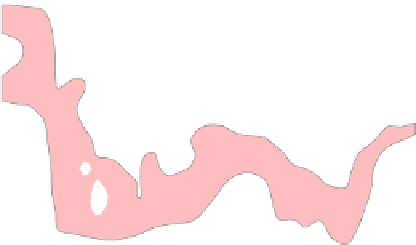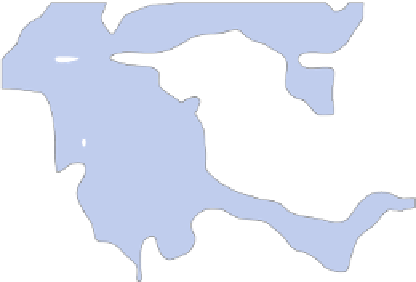Geography Reference
In-Depth Information
40°0'0"E
45°0'0"E
50°0'0"E
55°0'0"E
60°0'0"N
60°0'0"N
55°0'0"N
55°0'0"N
45°0'0"E
50°0'0"E
55°0'0"E
Fig. 7.10 Difference of simulated monthly average temperature in the winter between year 2000
and 2010 (C) in the study area
The land cover change in the study area in year 2100 is mainly characterized by
the conversion from forests to croplands, and it will lead to change of the near-
surface temperature. The annual temperature will decline, while the monthly
average temperature will increase from February to June and decrease from July to
January (Fig.
7.11
). In the boreal forest region, the temperature change mainly
results from the change of albedo due to snow masking (Bathiany et al.
2010
). As
snow covers the surface and boreal forests are converted to croplands, the albedo of
the land surface will increase and the net surface solar radiation will reduce, thus
leading to the cooling effect, which offsets the warming effect due to the decrease of
evaporation-transpiration. Therefore, near-surface temperature during the winter
will change most intensively, decreasing by 1.81 C on average. In the northern
hemisphere, solar radiation begins to strengthen in June, and becomes the strongest
around July and August. The conifer forests (needle-leaf forests) have lower
evapotranspiration rate (defined as ratio of latent heat flux to available energy) than
the deciduous broadleaf forests in the summer, which can lead to the higher rates of
sensible heat flux(Bonan
2008
). From 2010 to 2100, most Evergreen Needleleaf
forests will be converted to croplands, and thus the cooling effect due to the albedo
increase is also stronger than the warming effect due to the decrease of evapo-
transpiration in the previous needle-leaf forest area during July and August, and
consequently makes the average temperature decrease by 0.30 C. While in the


































































